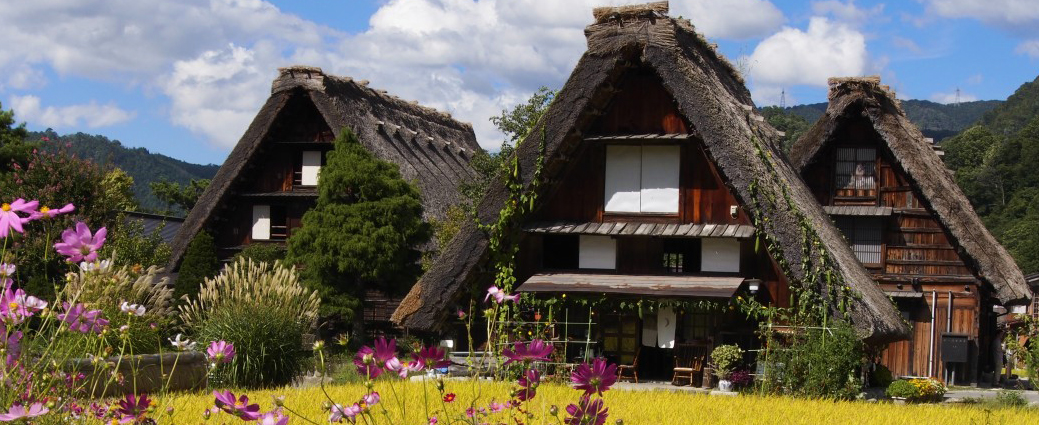Shirakawago
Category: Central Honshu Tags: tradition, World heritage
Although modern roads now make the traditional area of Shirakawa-go accessible in under an hour from the nearby city of Takayama, for many centuries the surrounding mountains and heavy winter snowfalls made the district nearly unreachable.
Cut off from the rest of the country, the villagers at Shirakawa-go continued their traditional lifestyle until very recently, raising silkworms under the steeply thatched roofs of their gasshō-zukuri (‘constructed like hands in prayer’) houses amidst rice fields and vegetable plots.
The villages of Gokayama and Ogi-machi, the two best preserved in the Shirakawa-go area, still remain much as they once were, and many of the thatched houses have been converted into museums which preserve the rich cultural heritage of the area.
Ogimachi itself is the largest village and the main attraction of the area. Declared a UNESCO world heritage site in 1995, the village has many very well preserved gasshō-zukuri farmhouses, some of which are nearly three centuries old.
The farmhouses are designed to withstand the harsh winters of this part of Japan and are most scenic either covered in snow or surrounded by green fields in Spring and Summer. Many of the farmhouses have been made into restaurants or museums.
Some farmhouses from the surrounding villages have been relocated to create an open air museum across the river from the centre of Ogimachi, known as the Gassho-zukuri Minkaen. This museum along with the other farmhouses and attractions in town and the area’s accessibility make Ogimachi the best place in the Shirakawago district to enjoy the gasshō-zukuri farmhouses.
Shirakawa-go can be easily accessed by Highway Bus from either Takayama or Kanazawa.
Contact us
Tel: 01865 841443
Fax: 01865 841445
Into Japan Specialist Tours
The Dovecote, Manor Farm, Ball Lane, Tackley, OX53AG


